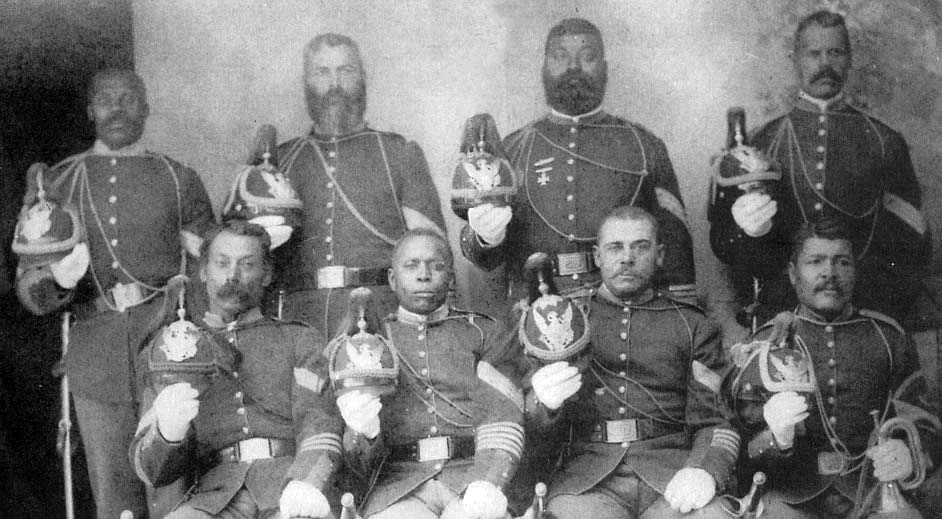Emanuel Stance was a Buffalo Soldier in the American Army and a recipient of the Medal of Honor – America’s highest military decoration for his actions in the Indian Wars of the western United States.
The Medal of Honor was created during the American Civil War and is the highest military decoration presented by the United States government to a member of its armed forces. Recipients must have distinguished themselves at the risk of their own life above and beyond the call of duty.
On May 16, 1870, a raiding party of eight to ten Apaches (probably Lipans) captured Herman Lehmann, who was almost 11, and his eight-year-old brother, Willie while they were in the fields at their mother’s request to scare the birds from the wheat.
Their two sisters escaped without injury. Four days later, the Apache raiding party encountered a patrol of 10 African-American cavalrymen led by Sgt. Stance, who had been sent from Fort McKavett to recover the two Lehmann boys.
Stance earned his place in history books in May 1870 while leading a patrol to find the two kidnapped children near Fort McKavett, Texas. During the two-day mission, Stance and his nine troopers skirmished with more numerous Apaches, capturing 15 horses and protecting government supplies without suffering loss. Elated by Stance’s success, his commander immediately recommended him for a Medal of Honor, which Stance received one month later, the first African-American regular so honored.
Willie Lehmann was able to escape, but the Apaches fled with young Herman. The kidnapping site was designated a Recorded Texas Historic Landmark in 1991, Marker number 11283.
Herman Lehmann (June 5, 1859 – February 2, 1932) lived first among the Apache and then the Comanche, but eventually returned to his family later in life. The phenomenon of a white child raised by Indians made him a notable figure in the United States.
Stance was born in East Carroll Parish, Louisiana, in 1847. Prior to joining the Ninth Cavalry in 1866, Stance was a “farmer,” often a euphemism in Army records for former slaves. Stance although prone to anger was literate; a quality that distinguished him from many peers and secured him promotion.

Public domain image
Despite his feat, Stance was a troubled man with a checkered personal life and military career. Although he eventually held the rank of first sergeant, he was reduced to private five times in 21 years of service. He barely avoided discharge many times, his two court-martial and various arrests highlighting his alcoholism, abusiveness and sometimes violent nature. Stance was found shot on Christmas morning of 1887 on the road to Crawford, Nebraska. He was shot with a service revolver and all evidence pointed to Stance’s privates.
Unmarried and without children, Stance left a mixed legacy. Eighteen African Americans earned the Medal of Honor during the Indian Wars of the western United States. Fourteen were “Buffalo Soldiers”, members of the Army’s first peacetime black regiments. The four Buffalo Soldier regiments, the 9th Cavalry, 10th Cavalry, 24th Infantry and 25th Infantry fought in campaigns throughout the west. The remaining four Medal of Honor recipients were U.S. Army Indian Scouts recruited from among the Black Seminoles, a group of Seminole Indians of African descent.










